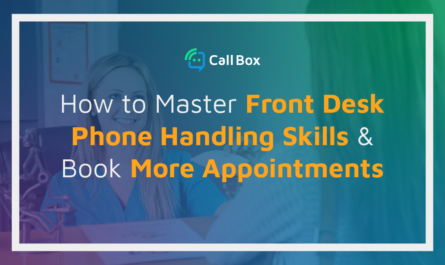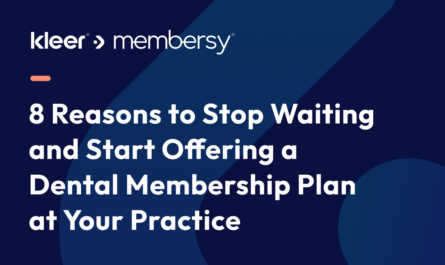DecisionOne leaders discuss lessons learned during their organization’s growth.
DecisionOne Dental Partners is a clinician-led firm that is designed to drive all decisions towards the best outcomes and processes for the patient. DecisionOne works with dentists at all stages of their practices, whether they are just getting started or looking to retire. By changing the way dentistry is done, the DecisionOne team is looking to improve the lives of their patients and team members.
In the following panel, DecisionOne leaders discuss their organization’s growth with the DEO. Participating in the discussion were:
- Cheryl Rytina is the Director of Operations at DecisionOne Dental Partners. Rytina works with the due diligence in the acquisitions process, ensuring that the transition between the acquisition manager and the ops team is seamless.
- Michael Lovergine is the transitions manager for DecisionOne. He helps to assimilate new practices into the group, acting as the communications liaison between the practice and DecisionOne.
- Kristy Walter is the insurance/AR manager for DecisionOne. Walter works out of the support center at DecisionOne, centralizing their insurance, AR, and verifications processes.
- Mike Olson is the Senior Director of Mergers and Acquisitions at
DecisionOne. Olson works with general dentists who are looking to transition their office, either to begin a retirement plan or to grow and strengthen their existing practice.
The DEO: Let’s get started with how your team is structured as a whole. Where were you before? How has the team evolved?
Cheryl Rytina: In the very beginning, it was one and the same. Dr. A.J. Acierno was CEO and a practicing dentist, and he was going out and finding practices. Mike Olson, we were very lucky to have a relationship with him early on when he was working for a bank. That relationship goes a long way back, and we are lucky to have him on the team at DecisionOne. At first, he was helping us to identify good practices to buy and seeing the lending support behind that.
All three of us would deploy to an office and do what we did best – forming relationships with the teams, finding out what they were looking for, and what success meant to their office. We would help implement systems to bring them to the next level and then we started building our own infrastructure as we continued to grow. At some point I did marketing, someone else did the recruiting and payroll and those kinds of things. So, it really was “Here, whoever’s available, do it,” at one point. It grew quite quickly from one office to another to another.
The DEO: Can you walk us through the order that you split the team into different positions and how you made those decisions?
Rytina: I think the order went in what the teams needed to be supported. It started with accounting, which we always looked at it as a result of what the offices are doing. After that, we realized that marketing was a really big part of getting results for the offices. How are we going to get out there so people know the great things that Dr. A.J. and Dr. Mike are trying to do for the profession? We quickly learned we needed insurance. It’s super difficult and not everyone understands it.
The next thing is we knew we needed HR to help us find good people and make sure we were in compliance. Procurement was a part of that somewhere along the way as well. As you grow, you get more leverage with your partners and vendors. How do you start saving money and leverage the size that you have, either to grow more or to give more resources to your offices, and give better services to your patients? And the next part was training and implementing those systems.
The DEO: Please describe your acquisition strategy.
Kristy Walter: We go through a due diligence process where we meet the team to gauge how they are feeling, and what their work behaviors might be. We also open a new bank account so that we can keep deposits from closing day and after from what they had previously. One of the bigger things we evaluate is the practice management system. Whatever the office is using, we stick with that for at least the first few months. The way that we can track our accounts receivable is by setting up a provider type, so we can understand the difference between the old money and the new money.
Mike Olson: We do a lot of work trying to assess how much time we are going to need to spend on marketing, supplies and doctor transition. So, we know going in whether it’s going to be a lot of effort or not. Early on, I remember sitting with Dr. A.J. and thinking, “Wow, we’re going to buy this practice, it’s going to take a lot of work. Let’s follow up with this practice that’s $1 million, but it’s running at full steam.” It sounds like a great plan: do a hard one, an easy one, hard one, easy one. It doesn’t always work out, so you must be flexible.
We know that if there are patients coming in the door before we buy them, we are going to implement something that will make them come more often. We’re going to take great care of them and give them a great experience. Even if we have a practice that is underperforming, we have a pretty good idea on how we can get them from good to great. Not everything’s gone perfectly, but you just have to adjust your approach.
The DEO: What makes DecisionOne unique?
Michael Lovergine: A very important part of our integration, which is not likely in most DSOs, is this relationship-building piece. After the due diligence, before closing, we go in and meet the team alongside the doctor. There’s a very important thing that happens at this moment, because the team that is coming onboard didn’t make this decision. The doctor made the decision. No matter how open the relationship was between that doctor and the team, we must give them the space to vent out their feelings and figure out the next step.
What we do that’s very special for DecisionOne is we create that safe space. That dialogue is not business-related, but more about them as a person: their goals and aspirations. How can we support that? We are truly, sincerely interested in making sure that we retain the entire staff that has that community involvement, because that’s why the patients chose that practice. We make decisions from the patient’s perspective. So, we teach that from the very first engagement that we have with the team, and we make sure that they understand that this acquisition isn’t a business transaction in the way that they might have thought it would be. I can honestly say this, since I’ve been here for a few years with all of our acquisitions and transitions, we haven’t lost anybody. I’m very proud of that.





